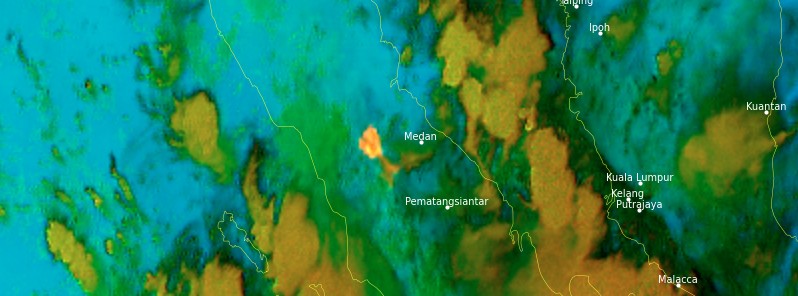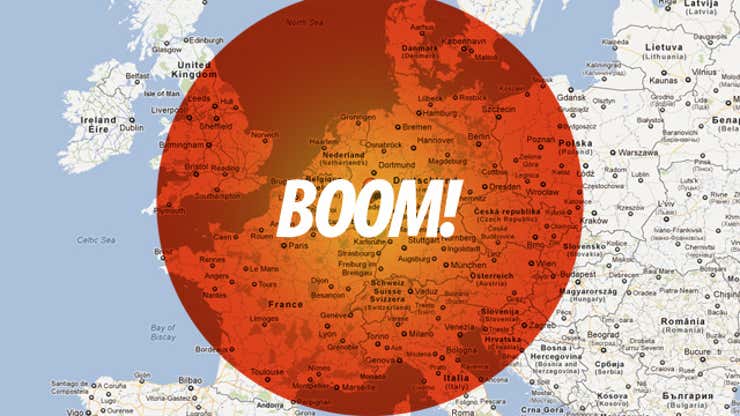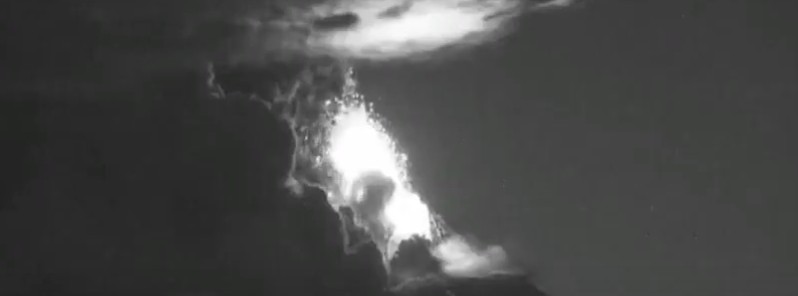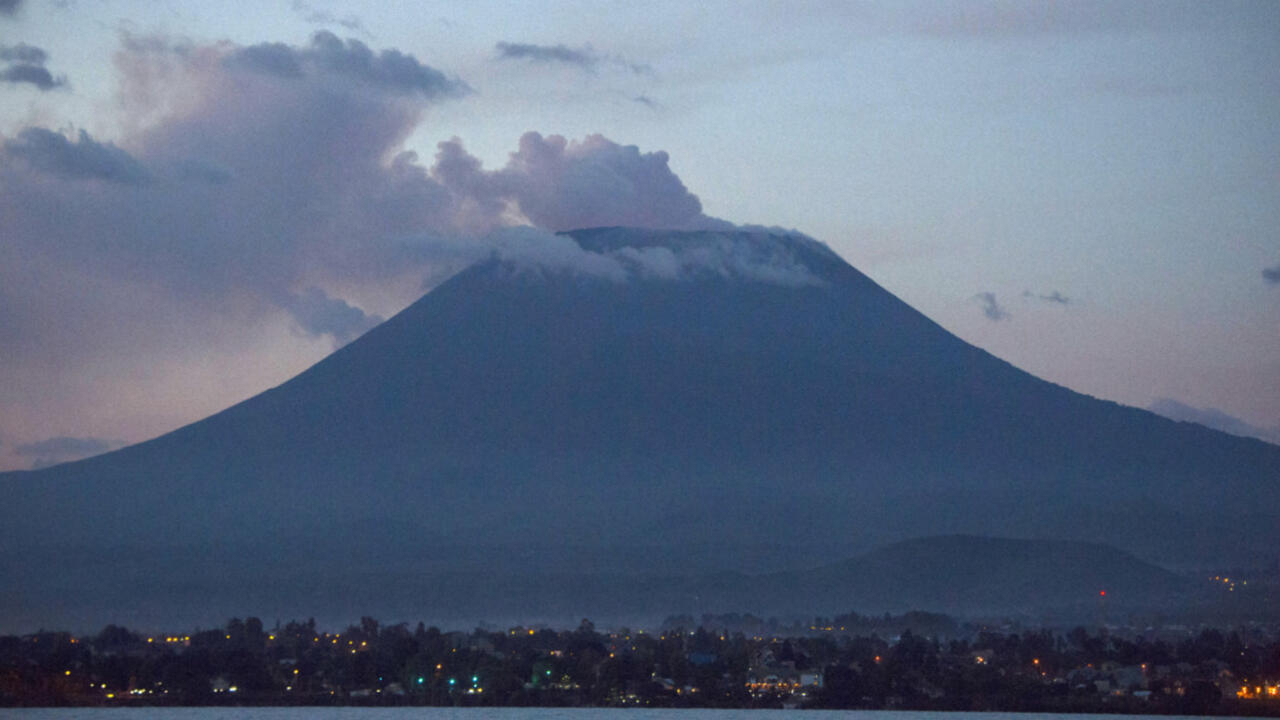Satellite images show that the earth is rising in an Eifel town on Lake Laacher See. It is an area where earthquakes indicate magma movement. Scientists step up surveillance.
Strange things happen in the Eifel village of Glees, where the Maria Laach monastery is located and the German Volcano Road begins.
The earth shakes slightly, the earth rises slightly, and the fountain at SOL Kohlensäure GmbH & Co. KG (a CO2 producing company)
no longer bubbles: After around 50 years, there has been no more carbon dioxide from the depths since 2016. Nobody really knows what that is related to, but one thing connects all the phenomena there: The place sits above the Eifel volcano .
The latest information comes from a height of 700 kilometers and yet revolves around a few millimeters: Using radar technology, the Sentinel-1 satellite has provided data that the roof of the carbonic acid fountain is approaching it by up to one centimeter a year. Something is pressing from below.
Elevation of four centimeters
Roofs are the most common measuring points for such elevations. The Federal Institute for Geosciences and Raw Materials made this clear. In an evaluation by the Ground Movement Service Germany (BBD), almost all measuring points are green: no changes in height. Wherever mining is or has been carried out, yellow and red dots are found because the earth is sinking, or blue ones because it rises again after mining has ended.
The roof of the well building in Glees is dark blue. It lies between a few more blue dots. An increase of
almost four centimeters from 2016 to 2019. The next evaluation that the BBD is planning for the summer will show how things will continue after that.
It is data that is electrifying for Thorsten Dahm, professor at the Geoforschungszentrum Potsdam (GFZ) and head of the Earthquake and Volcano Physics section there. Following an inquiry from t-online, he had the elevation in Glees confirmed by experts in radar wave distance measurement at GFZ.
At a diameter of 200 kilometers, the earth in the
Eifel bulges very weakly, one millimeter a year.
But a local uplift as in Glees, ten times as strong as that, is something that has so far been missing from observations on volcanism in the region. Glees was already keeping a close eye on Dahm. Last year, at a meeting of various institutions not far from the town, discussions were held about improving geophysical monitoring in the Eifel.
Last eruption 12,900 years ago
At the beginning of 2019, Dahm and other researchers caused a sensation with a study that provided evidence that magma flows in where the Laacher See volcano erupted 12,900 years ago.
At that time, clouds of ash moved as far as Sweden and northern Italy, debris from the explosive eruption when magma and water came together dammed the Rhine and turned it upstream into a lake landscape. It was the largest known volcanic eruption in the Eifel in the last 100,000 years.
Measurement data now clearly indicate an upward movement in the magma below the region. Earthquakes at great depths with unusually low vibration frequencies, so-called DLF quakes, were registered. If you connect the points at which these DLF earthquakes lasting between 40 seconds and 8 minutes have been observed since 2013, you get a channel. From a depth of 45 kilometers southwest of the Laacher See, it rises to a depth of ten kilometers below the Laacher See. A magma chamber is believed to be ten to seven kilometers deep there, a remnant of the eruption at that time, into which magma could flow today.
In the extension of the upper end of the ascent channel lies: Glees. And from there, it wasn't just the satellite that delivered the suspicious data. In 2017, researchers there recorded an unusual sequence of very weak tremors at depths of four to five kilometers, i.e. above the presumed magma, for months.
Potsdam expert: "Special constellation"
This quake swarm and the uplift - is this a sign of the penetration of magma into higher surrounding rock, a so-called magmatic intrusion? "It is not possible to say with certainty whether it is related to this," Dahm told t-online. Both phenomena at the location are "a very interesting development and a special constellation".
According to the GFZ researcher, the sequence of the smallest swarm is not typical for incoming magma. "
The activity could also be triggered by CO2 that has dissolved like a 'pop' at a greater depth." And there could also be some causes for the uplift in Glees, also man-made.
The view goes to the carbon dioxide producer SOL and its fountain in Glees. When the uplift began in 2016 in the data from the satellite launched two years earlier, the production of carbon dioxide at SOL had come to a standstill. But the company does not believe in a connection with the uplift.
No more dying plants
There is also another observation of the Gleeser farmer Jürgen Radermacher:
There are no more plants suffocating in the fields that he cultivates around the Wiesenhof, a stone's throw from the fountain building: "A few years ago there were places where carbon dioxide rose and then after sowing young plants have died. " Where is the carbon dioxide?
The gas production, which for the time being dried up, is neither excluded nor confirmed as the cause of the uplift, even for another expert. The phenomenon can be explained by the intrusion of magma, says Michael Förster, who has analyzed the eruptions of the Eifel volcanoes over the past 500,000 years and is researching the geochemical behavior of magmas at Macquarie University in Sydney.
How should one imagine that? "It would then be a very shallow inflow from the possible chamber under the Laacher See, moving sideways," said Förster. The not so large sequence of the DLF earthquakes in the ascent channel could fit in with this. That is then a small amount, not a harbinger of an imminent outbreak.
"In other volcanoes, elevations of several tens of centimeters to meters before eruptions are known."
Elevation would not be considered in Iceland
GFZ Professor Dahm confirms this: "An uplift of this magnitude would be noticed in Iceland, but uplifts on volcanoes there are only examined more closely when they are significantly larger: in the range of centimeters per month."
In addition to the very local phenomenon at Glees, the scientists are also concerned with large-scale uplift:
an area 200 kilometers in diameter as far as Luxembourg rises slightly , "the cause must be deep in the mantle," says Dahm - where the origins are in rock movements for volcanism in the Eifel, Westerwald and Siebengebirge.
GPS data provided the information for this, and a study by the University of Nevada was able to confirm the extent and localize it more precisely. But this uplift is a large-scale process and nothing that could provide clues as an early warning system. The earthquakes or local uplifts then play a role.
Overall, these are weak signals in the Eifel. But: "We take it seriously," said Dahm. "We want to watch it even more closely." This is done in cooperation with the State Geological Office in Mainz and the State Surveying Office in Koblenz.
To monitor more GPS transmitters
Additional GPS stations will be set up around the Laacher See in order to better record uplift in the future, says Dahm. In Glees, the chemical composition of gas samples is to be examined with an isotope analysis. This analysis should also be an important component in assessing: Was it CO2 that made a plop at a greater depth? What was the possible trigger? The strange things in the Eifel village of Glees in the volcanic area, which will not rest forever, still pose a number of puzzles to the scientists.



















